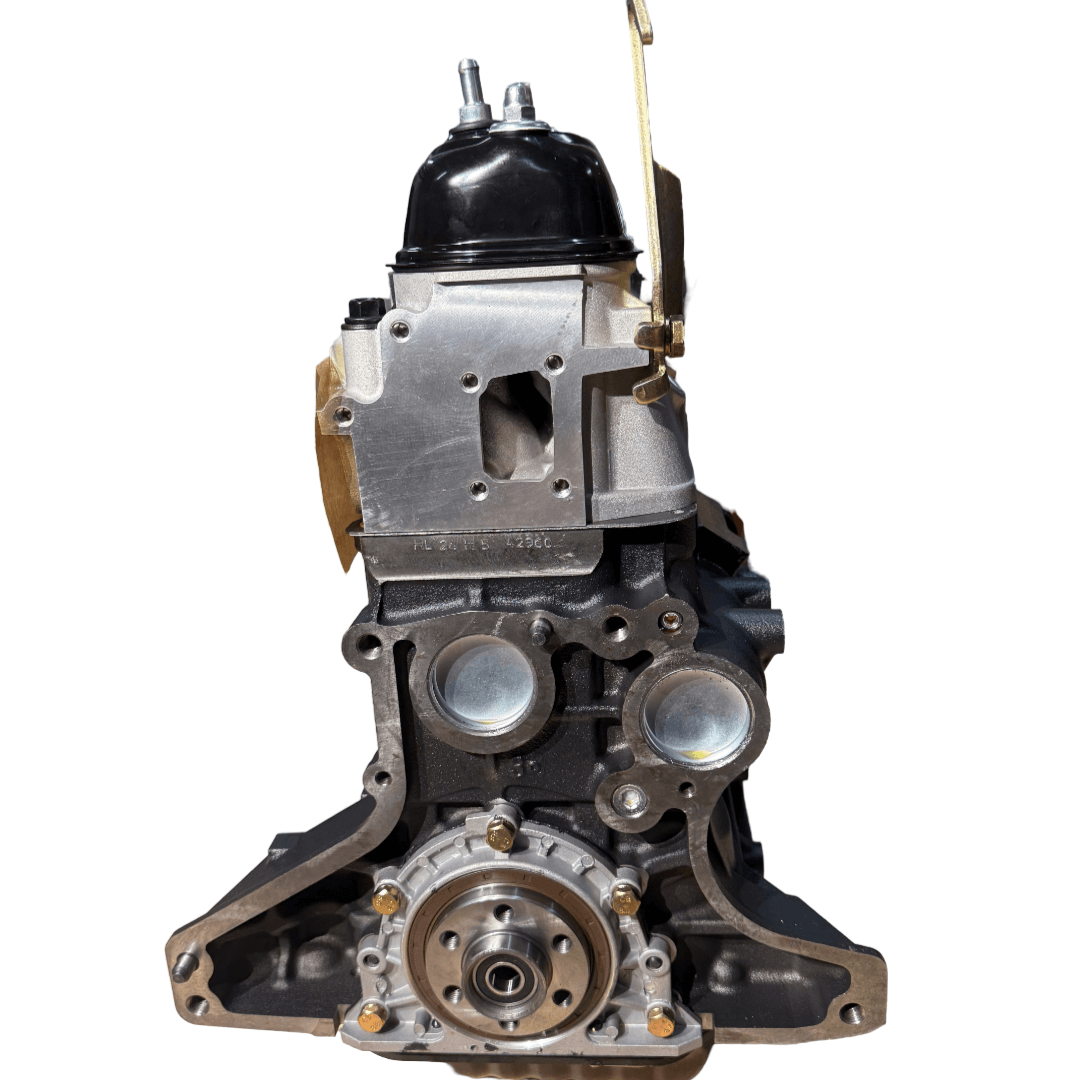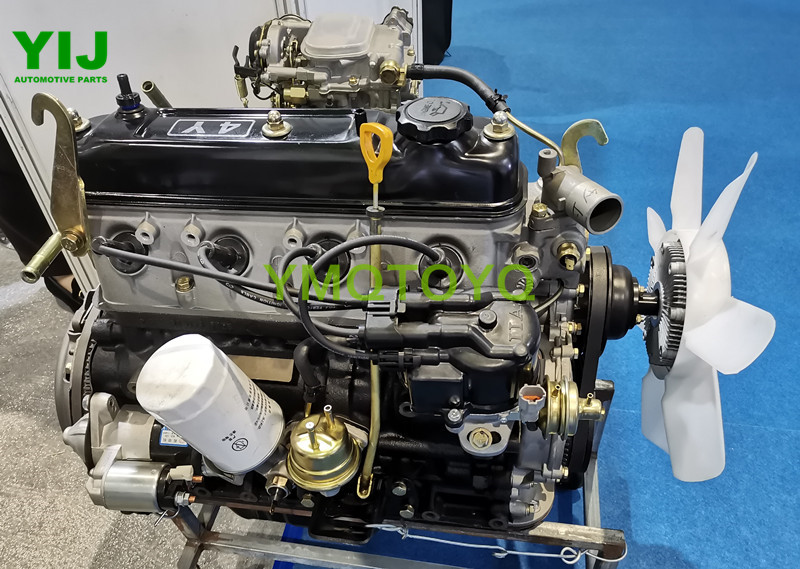How to Troubleshoot Common Issues with the 4Y Engine
How to Troubleshoot Common Issues with the 4Y Engine
Blog Article
Exploring the Different Kinds of Engine: Which One Fits Your Needs?
In the pursuit to identify one of the most appropriate engine type for your particular requirements, it is essential to assess the unique qualities and benefits of each choice offered. Internal combustion engines remain to dominate as a result of their reliability, while electrical engines are obtaining grip for their sustainability. Crossbreed engines offer a functional concession, and diesel engines attract attention for their power sought after applications. Furthermore, alternative gas engines present cutting-edge services, albeit with particular limitations. Understanding your concerns will contribute in this decision-making process, leading to an exploration of variables that may affect your selection.

Internal Burning Engines
Internal burning engines (ICEs) are the backbone of modern transport, powering a large array of lorries from cars and trucks to planes. These engines operate the concept of converting fuel into power via a series of controlled explosions within a burning chamber. The most usual kinds of ICEs consist of fuel engines, diesel motor, and rotating engines, each developed to fulfill details efficiency and performance needs.
Gas engines normally make use of trigger ignition, while diesel motor rely upon compression ignition, causing unique distinctions in gas efficiency and power output (4y engine). Rotary engines, or Wankel engines, offer a compact design and smooth operation, however are much less commonly utilized in mainstream applications
ICEs have undertaken substantial advancements in innovation, including the introduction of turbocharging and fuel injection systems, which enhance total effectiveness and efficiency. Regardless of their efficiency improvements, ICEs encounter raising examination because of their environmental influence, particularly concerning greenhouse gas discharges. As the auto sector evolves, the future of ICEs continues to be a subject of debate, balancing efficiency, efficiency, and environmental factors to consider. Nonetheless, they remain to play a critical role in worldwide transport facilities.
Electric Engines
As worries about ecological sustainability and fossil fuel reliance grow, electric engines have actually arised as an engaging choice to interior burning engines. These engines use electric motors powered by batteries or gas cells, offering a cleaner and extra efficient means of propulsion.
Among the key benefits of electrical engines is their lowered exhausts. Unlike traditional engines that burn fossil fuels, electric engines produce zero tailpipe exhausts, substantially lowering air pollution and contributing to enhanced public health and wellness. Additionally, the efficiency of electrical motors often goes beyond that of internal burning engines, transforming a greater percentage of energy from the source of power right into functional energy for activity.
Electric engines are also remarkable for their quiet procedure, making them perfect for urban environments. 4y engine. The simplicity of their design causes fewer relocating components, which can result in minimized upkeep costs and increased reliability in time
However, challenges remain, including battery production influences, billing infrastructure, and variety constraints. Despite these obstacles, the growing investment in electric automobile technology and renewable energy sources factors towards an appealing future for electrical engines, placed to play an important role in the transition towards sustainable transportation.
Hybrid Engines
Mixing the advantages of both conventional and electric inner combustion engines, hybrid engines represent a functional option in site link the pursuit for effective and lasting transportation. These engines integrate a gasoline or diesel motor with news an electrical motor, allowing for enhanced fuel effectiveness and lowered emissions contrasted to conventional automobiles.
Hybrid engines run in several modes, using the electric motor for low-speed driving and the internal combustion engine for higher rates or when even more power is needed. This dynamic procedure not just enhances gas economic climate but additionally adds to a smoother driving experience. Regenerative braking is an additional important attribute, recording power usually lost throughout stopping and rerouting it to charge the battery.

As customers progressively prioritize eco-friendliness, crossbreed engines stick out as a sensible choice, providing a reliable equilibrium of performance, effectiveness, and environmental responsibility. This versatility makes them appropriate for metropolitan travelling and long-distance travel alike.
Diesel Motor
Effectiveness and power are hallmarks of diesel motor, which have actually long been favored for their toughness and fuel economic situation. These engines run on the principle of compression ignition, where air is compressed to a heat before fuel is injected, igniting it without the need for trigger plugs. This process makes it possible for diesel engines to achieve greater thermal effectiveness contrasted to gas engines, translating into much better fuel gas mileage and reduced carbon dioxide discharges.
Diesel engines are especially appropriate for heavy-duty applications such as vehicles, buses, and commercial equipment, where torque and sturdiness are extremely important. Their style usually consists of more powerful elements to stand up to the greater stress created during operation, resulting in longer service life and minimized upkeep costs.

Different Fuel Engines
While diesel engines have lengthy dominated the landscape of durable power resources, different fuel engines are acquiring traction as practical choices for a more sustainable future. These engines use a variety of gas, such as pressed gas (CNG), hydrogen, ethanol, visit and propane, intending to lower greenhouse gas emissions and reliance on nonrenewable fuel sources.
One substantial advantage of alternate gas engines is their potential to lower carbon impacts. For circumstances, CNG engines release fewer pollutants contrasted to conventional diesel motor, making them ideal for metropolitan transportation systems and fleets seeking to boost air quality. Ethanol, acquired from biomass, not only reduces emissions however additionally supports farming economic climates.
Hydrogen fuel cells stand for an advanced growth in this realm, supplying zero-emission power through a chemical response between hydrogen and oxygen. Nevertheless, challenges such as framework development and manufacturing prices continue to be barriers to prevalent adoption - 4y engine.
Final Thought
Finally, selecting the appropriate engine kind necessitates cautious consideration of certain needs and choices. Inner burning engines use integrity, while electrical engines focus on sustainability and decreased upkeep. Crossbreed engines incorporate the benefits of both, improving performance, whereas diesel motor supply superior power and torque for sturdy applications. Different fuel engines existing eco-friendly alternatives, albeit with prospective facilities challenges. Inevitably, an extensive evaluation of driving routines and ecological worths will facilitate an informed decision concerning engine selection.
Hybrid engines use a flexible concession, and diesel engines stand out for their power in requiring applications. The most typical types of ICEs consist of fuel engines, diesel engines, and rotary engines, each designed to meet particular performance and efficiency needs.
Unlike traditional engines that shed fossil fuels, electrical engines generate absolutely no tailpipe discharges, considerably decreasing air contamination and adding to improved public wellness.Hybrid engines operate in several settings, making use of the electric motor for low-speed driving and the interior combustion engine for higher rates or when more power is required. Crossbreed engines incorporate the advantages of both, enhancing effectiveness, whereas diesel engines give exceptional power and torque for heavy-duty applications.
Report this page